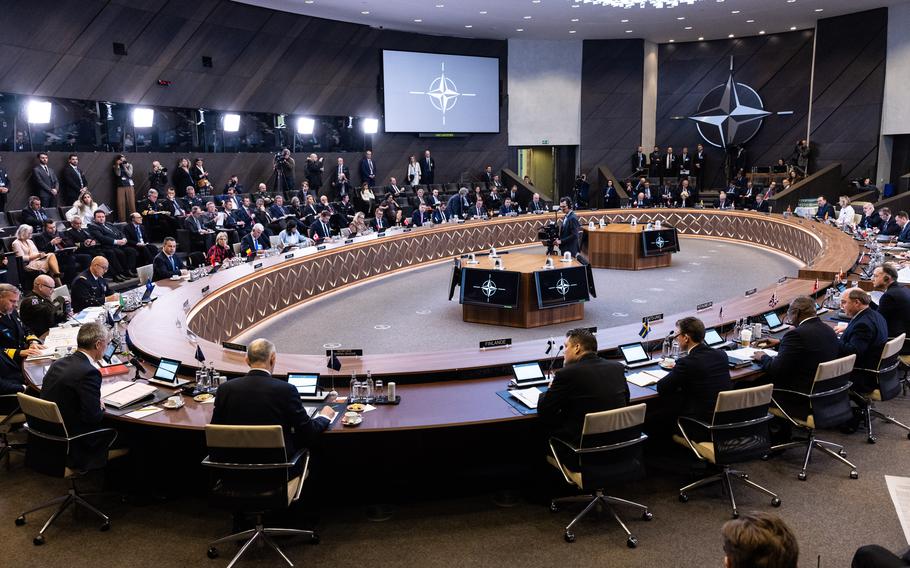
NATO country defense ministers, including U.S. Defense Secretary Lloyd Austin, meet in Brussels on Feb. 15, 2023. The alliance will put renewed emphasis on pressuring member countries to devote a greater share of their budgets to defense. (NATO)
Defense spending is back on the agenda at NATO, where allies are expected to ratchet up the pressure on fellow member countries that routinely miss an expenditures target agreed to by the alliance nine years ago.
U.S. Defense Secretary Lloyd Austin said Wednesday after high-level talks in Brussels that NATO country heads of state are poised to agree on a new investment pledge.
The aim is “to ensure that the alliance has the resources to carry out these new plans,” Austin said, in reference to updated territorial defense plans that haven’t yet been disclosed in detail.
The agreement will be finalized at a NATO summit this summer in Lithuania and is likely to up the ante for the 30 alliance members.
Austin didn’t speculate on what the new figure might be. But the topic has reemerged as allies grapple with the issue of replenishing weapons stockpiles depleted during the Russia-Ukraine war.
NATO Secretary-General Jens Stoltenberg said Wednesday that the 2% of gross domestic product benchmark set in 2014 may no longer be sufficient.
“What is obvious is that if it was right to commit to spend 2% in 2014, it is even more right now because we live in a more dangerous world,” Stoltenberg told reporters in Brussels.
The broader security implications of Russia’s full-scale invasion of Ukraine and challenges posed by China are among the reasons Stoltenberg cited for more military investments.
One option could be to set 2% as the bare minimum for members rather than regarding it as a ceiling, the NATO chief said.
It remains an open question whether that minimum could be pushed beyond 2%, which some allies, such as Poland, have supported.
Defense spending has long been a contentious issue in NATO and several American presidents have pointed out the spending shortfall among some allies.
President Donald Trump was known for excoriating those member countries, notably Germany, that repeatedly spent small percentages of GDP on defense. He regarded such countries as free-riders that took advantage of American security guarantees.
Still, allies steadily have been boosting their investments, a trend that began even before Trump took office in 2017.
But most NATO countries still fall short of the current mark, which they are supposed to achieve by next year.
The U.S., Great Britain, Greece, Poland, Croatia, Latvia, Lithuania and Estonia meet the 2% threshold. That is roughly one-fourth of the alliance, although the total is up from just three countries in 2014.
Nonetheless, the alliance collectively has now increased defense spending for eight straight years, and Stoltenberg said that trend is expected to continue this year.
“But more needs to be done,” he added.